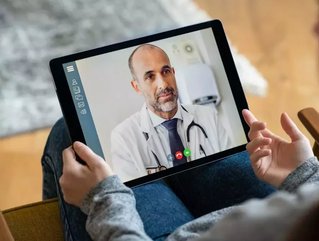Amazon’s B2B telehealth strategy and healthcare's future

Amazon is expanding its telehealth services to its employees in the US, with plans to offer the service to other companies as a workplace benefit for their own staff. Despite the rapid adoption of telehealth due to COVID-19, and the organisation having a vast network of consumers at its fingertips, the tech giant is choosing to expand its telehealth services through B2B partnerships rather than out to its customers.
David Bardan, Vice President and Head of Commercial at TytoCare believes that this highlights the strategic importance of a B2B rollout for telehealth. "For over 50% of Americans, employers are the trusted source of health coverage and wellness benefits" Bardan says. By working directly with employers, Amazon is enabling consumers to receive its healthcare offerings within their trusted health and wellness ecosystem, rather than as an add-on outside of their familiar framework."
"Additionally, Amazon has likely turned to B2B partnerships with employers because employers are highly aware of the costs facing the US healthcare sector as a whole, as they often pay the bills. Amazon’s solution helps tackle the challenge of cost by navigating consumers to the right care. Employers are then able to serve as healthcare ambassadors of the Amazon offering for team members."
Amazon has long been leading the way in streamlining access to products and services, and now that the company is turning its attention to healthcare, Bardan believes this will trigger further change across the industry. "By making high-quality care easy to access from the comfort of home, enabling immediate-term relief, peace of mind, and longitudinal wellness, Amazon is joining the ranks of telehealth companies like TytoCare that have been spearheading this shift."
"Consumers today are highly accustomed to on-demand access to everything from groceries to haircuts, and there is a strong appetite for healthcare that can meet them at home, which has long been our goal and is now exactly what Amazon is offering as well."
This means companies that haven't yet invested in high-quality virtual care options risk lagging behind. However Bardan says telehealth adoption will continue to increase over the next few years. "In 2020, there was a huge shift in telehealth adoption, prompting multiple types of healthcare players to think more concretely about their strategy and invest in their virtual care infrastructure.
"In 2021 and beyond, we’ll start to see the pay offs from these investments, including higher quality visits, better clinical and diagnostic tools, and more continuity between virtual and in-person care. We’ll see this trend reinforce itself, in which quality spurs further adoption, spurring further investment. The telehealth technology is here, and consumers have demonstrated their willingness to use it."






